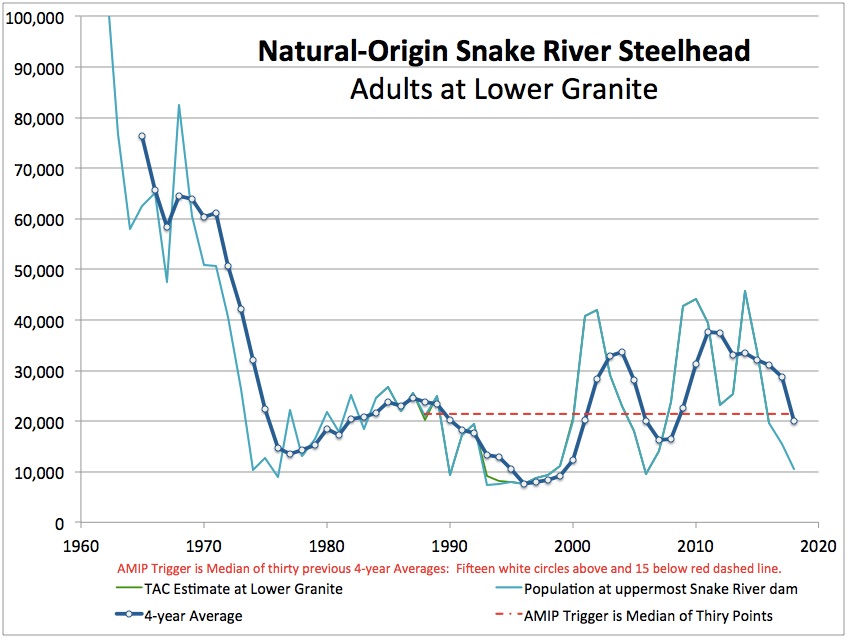forum
library
tutorial
contact

Saving the Fish
by Richard ScullyLewiston Tribune, April 19, 2020
|
the film forum library tutorial contact |

|
Saving the Fishby Richard ScullyLewiston Tribune, April 19, 2020 |
 With all due respect to those who believe all is well with Idaho's salmon and steelhead because the numbers returning in the 2000 to 2009 decade averaged more than in the 1930s and 1940s, this is an "apples and oranges" comparison.
With all due respect to those who believe all is well with Idaho's salmon and steelhead because the numbers returning in the 2000 to 2009 decade averaged more than in the 1930s and 1940s, this is an "apples and oranges" comparison.
The earlier numbers were all wild fish that spread throughout Idaho's back country. They were uniquely adapted and genetically resilient, persisting for thousands of years.
Most fish returning recently were spawned in hatcheries. Snake River wild fish numbers plummeted following construction of the lower Snake River dams. Prior to that, two to six adult salmon and steelhead returned to the Snake River for every 100 juveniles (smolts) that migrated to sea.
Currently, the average number of adults returning to Idaho per 100 smolts are 0.8 for spring chinook and 1.6 for steelhead, leading toward extinction.
Spawning grounds in Idaho's pristine backcountry, such as the Middle Fork of the Salmon and Selway rivers, are nearly vacant. Intermittent large runs are returning to hatcheries.
By the 1970s, federal agencies recognized the rapid decline in wild fish caused by construction of the lower Snake River dams and attempted to compensate the fishing community by producing hatchery smolts.
This does not compensate the Selway River and other natural spawning areas, nor does it compensate the ecosystem and the 100-plus species that depend on the nutrients salmon bring back from the sea.
Among the draft environmental impact statement options, only option MO3 -- removing the lower Snake River dams -- is likely to restore Idaho salmon and steelhead.
learn more on topics covered in the film
see the video
read the script
learn the songs
discussion forum
